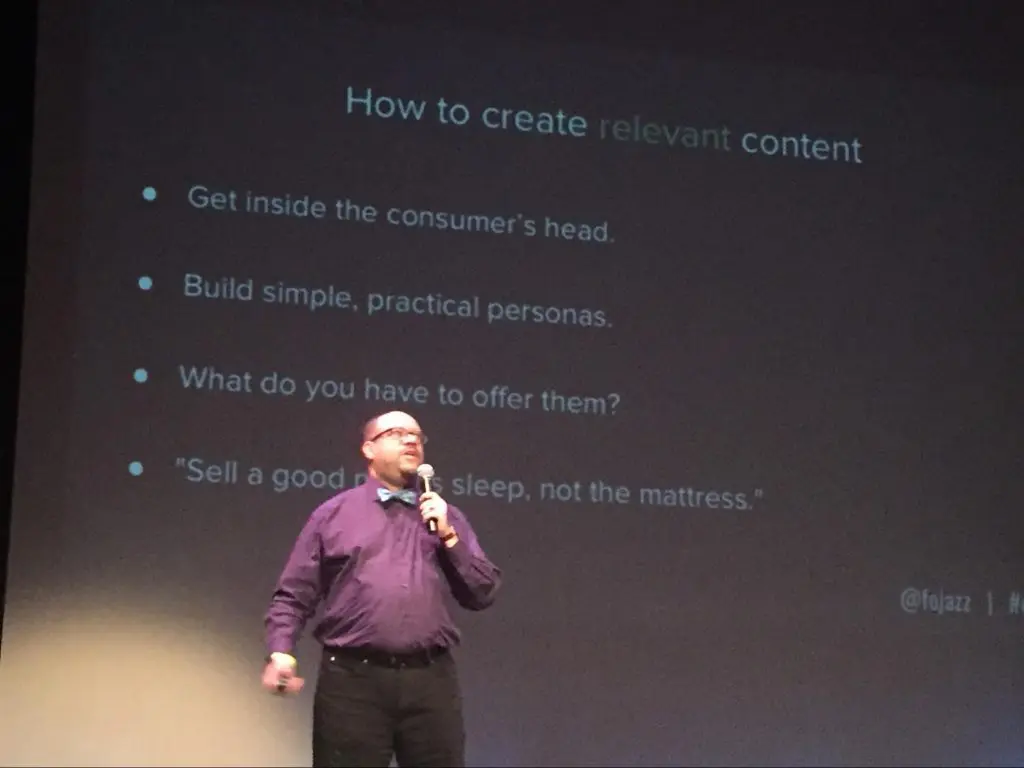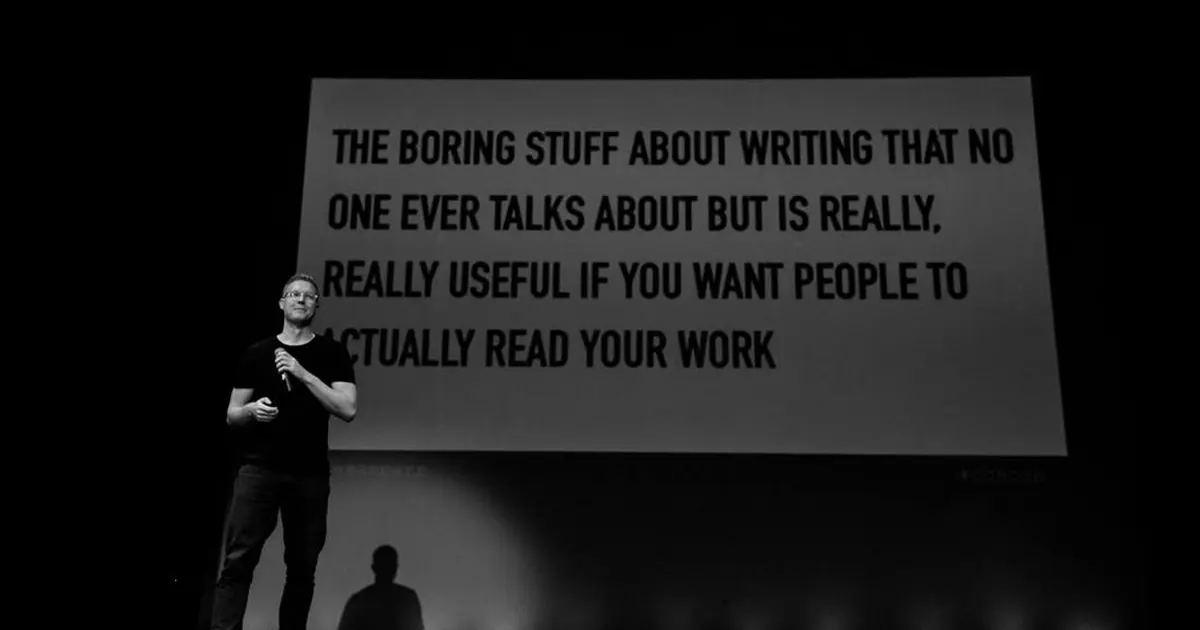
We recently spent a day immersed in content at ConCon, the clue-is-in-the-name Content Conference.
Why would we do something like that?
To hear Sam Parr, conference host and publisher of the Hustle newsletter explain why the above sentence is designed to create a slippery slope of readability.
Suddenly find “content creation” added to your job description? Not an uncommon scenario at small tech startups. Fortunately, Parr offers an anyone-can-do-this writing methodology. Follow it, and you could be writing articles like the popular Hustle post What Happened When I Went 30 Days Without Food, one man’s tale of surviving on Soylent, the “SlimFast for nerds” meal replacement.
His advice?
A mix of timeless writing guidance—write a rough draft, then let your idea incubate. Self edit. Use short sentences—and familiar online-marketing practices (generate and test a ton of headlines. Optimize your content for Facebook).
Need help knowing where to simplify your writing? The Hemingway App is a great online tool for getting a quick take on how readable your writing is.
He also suggests copywork. That’s the practice of internalizing good writing tropes by copying out passages of impactful prose in your own hand. A good way to deconstruct rhythm, pace and style.
You can check out Parr’s step-by-step writing guide online at the Hustle.
Elsewhere at ConCon, recurring themes included respect for your audience’s time, goals and intelligence.
Quartz creative director Michael Dolan emphasized basketball coach Pat Riley’s adage on the importance of focus: “The main thing has got to be the main thing.”
For Alexis Grant of personal finance site the Pennyhoarder, all the content they feature has to map back to the same question: “Does this put money in our user’s pockets?”
None of that is to say that you should Always Be Selling. Matthew Smith of Fathom & Draft makes a great case for not CTA-ing for the sake of it.
Matthew’s Really Good Emails project is a much-needed marketing resource, collecting inspiring examples of an often-charmless content format.
I’m supposed to remind you that you should work with our content team here. But on Matthew Smith’s advice, I’ll spare you the sales pitch.

Evernote users care about productivity the same way Pennyhoarder readers care about saving cash. Forrest Dylan Bryant, Evernote’s Director of Content, is focused on crafting the kind of content Evernote users would be looking for anyway.
A glance at Evernote’s Facebook feed shows plenty of tips and perspectives that productivity fiends should appreciate.
Their seasonal gift guide gives the nod to other apps and products, including content tool Grammarly Premium. Blog posts focus on topics like remote working. Curated content offers habit-forming productivity hacks.
When it comes to providing solutions for an audience “looking for high-quality, meaningful content”, Forrest walks it like he talks it.
The advice to “make good content” (or, as Forrest would have it “make masterful content”) can be a little maddening at times. It’s tempting to say “well, duh” and mutter something about stating the obvious.
But breaking down the philosophy and methodology behind highly-clickable gonzo blogging (the Hustle’s 30 days on Soylent) and user-centered content development (for example, Evernote’s tips on surviving the open office) shows that content creation really is a craft to be mastered.
Navigating the niceties of an open office, and skipping meals via “SlimFast for nerds” are both ways to maximize your efficiency.
The trick is knowing what your audience wants.
Thoughtful reminders to pack headphones and hand sanitizer for the office? Or voyeuristic details on gastroenterological havoc from envelope-pushing efficiency ninjas?
Once you know that, create your content accordingly.
Does your business need some strategic content support? Give Kiosk a call.
